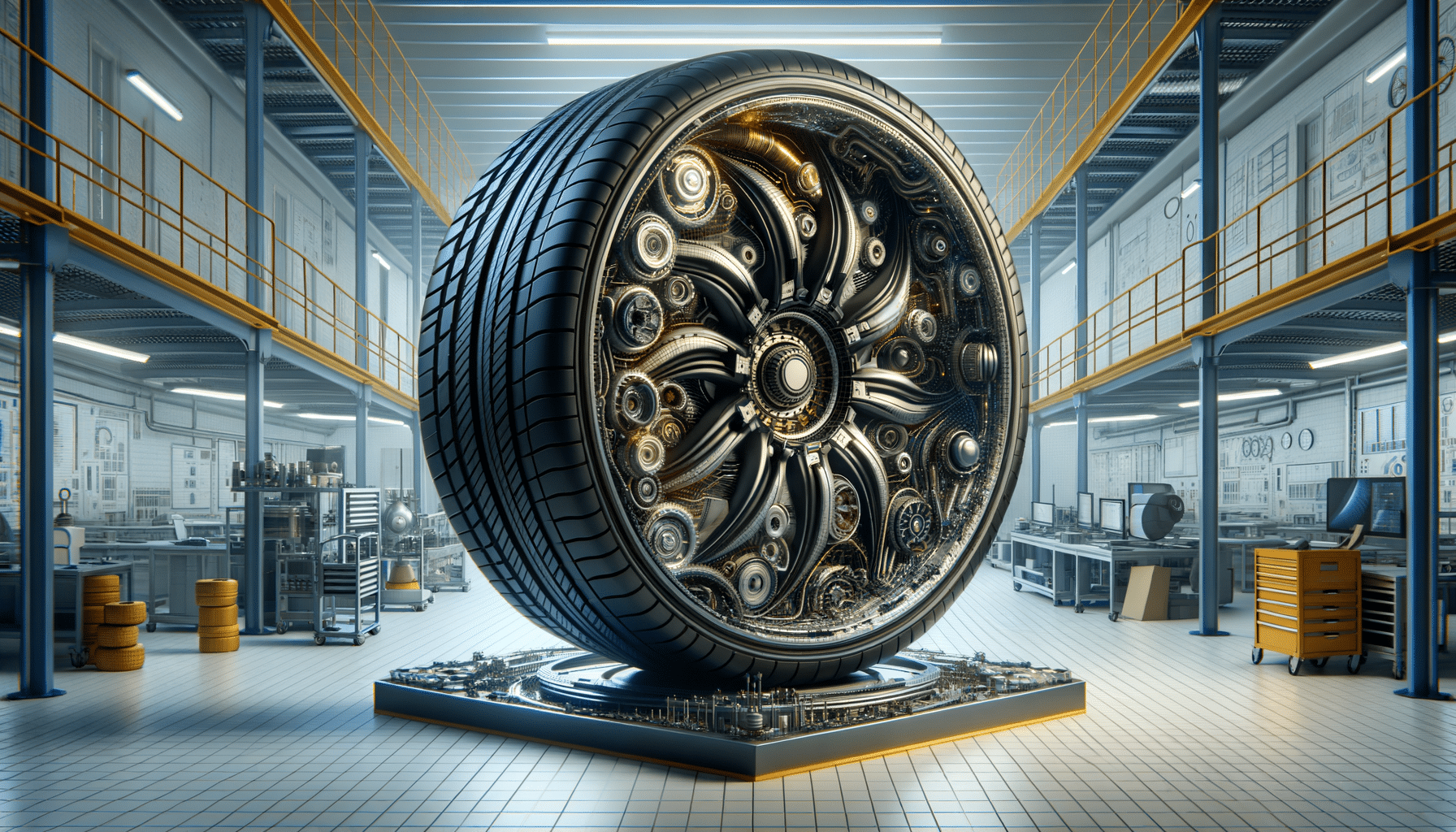
Diving into the Universe of Tires: Your Complete Guide
The Anatomy of a Tire: Understanding the Basics
Vehicle tires may seem like simple rubber circles, but they are intricate components designed with precision to ensure safety and performance. At their core, tires consist of several layers, each serving a unique purpose. The primary parts include the tread, sidewall, beads, and carcass. The tread is the outermost layer, responsible for gripping the road. It features patterns that vary depending on the tire’s intended use, such as all-season, winter, or performance tires.
The sidewall connects the tread to the bead and provides lateral stability. The bead is a crucial component, anchoring the tire to the wheel rim. It comprises a bundle of high-strength steel wires encased in rubber. The carcass, often made of polyester or steel cords, forms the tire’s backbone, offering structural integrity. Understanding these components helps in selecting the right tire for specific driving conditions and needs.
Each layer works harmoniously to deliver a balance of traction, durability, and comfort. For instance, the tread pattern influences how a tire handles wet or dry surfaces, while the sidewall’s flexibility affects ride comfort. By delving into the anatomy of a tire, car owners can make informed decisions when purchasing or maintaining their tires, ensuring they meet the demands of their driving environment.
Types of Tires: Choosing the Right Fit for Your Vehicle
Choosing the right tire involves understanding the diverse range of options available, each tailored to specific driving conditions and vehicle types. Among the most common types are all-season, summer, winter, and performance tires. All-season tires are designed to offer a balanced performance in various weather conditions, making them a popular choice for many drivers. They provide adequate traction in both wet and dry conditions but may not excel in extreme weather.
Summer tires, on the other hand, are optimized for warm weather, offering superior grip and handling on dry roads. However, they are not suitable for cold or snowy conditions. Winter tires are specifically engineered to handle snow and ice, featuring deeper treads and softer rubber compounds that remain flexible in low temperatures. These characteristics ensure enhanced traction and safety in winter driving scenarios.
Performance tires cater to enthusiasts seeking enhanced handling and responsiveness. They often feature softer compounds and unique tread designs for increased grip, particularly at high speeds. Understanding these differences allows drivers to select tires that align with their driving habits and regional climate, ensuring optimal performance and safety.
The Science of Tread Patterns: How They Affect Performance
Tread patterns play a pivotal role in a tire’s performance, influencing grip, noise, and wear. The design of the tread pattern determines how effectively a tire can channel water away from its surface, impacting its wet-weather performance. Symmetrical tread patterns, featuring continuous ribs or independent lugs, are versatile and suitable for all-season tires, offering a smooth and quiet ride.
Asymmetrical tread patterns combine different designs on the inner and outer sections of the tire, enhancing cornering capabilities and stability. These patterns are often found in performance and high-speed tires, where precise handling is critical. Directional tread patterns, recognizable by their V-shaped grooves, are designed to provide excellent resistance to hydroplaning, making them ideal for wet conditions.
The choice of tread pattern should align with the driver’s priorities, whether it’s maximizing fuel efficiency, enhancing traction, or reducing road noise. By understanding the science behind tread designs, drivers can make informed decisions that complement their driving style and environmental conditions.
Maintaining Your Tires: Tips for Longevity and Performance
Proper tire maintenance is crucial for ensuring longevity and consistent performance. Regularly checking tire pressure is one of the simplest yet most effective ways to maintain tires. Under-inflated tires can lead to increased wear, reduced fuel efficiency, and compromised handling. It’s advisable to check tire pressure at least once a month and before long trips.
Rotating tires every 5,000 to 8,000 miles helps in achieving even wear across all tires, extending their lifespan. Additionally, wheel alignment should be checked periodically, as misalignment can lead to uneven wear and affect vehicle handling. Balancing tires is another essential maintenance practice, preventing vibrations and ensuring a smooth ride.
Inspecting tires for signs of damage, such as cuts, punctures, or bulges, is vital for safety. If any issues are detected, it’s important to address them promptly. By following these maintenance tips, drivers can enhance the performance and durability of their tires, ensuring a safe and comfortable driving experience.
Innovations in Tire Technology: What the Future Holds
The tire industry is constantly evolving, with innovations aimed at enhancing safety, performance, and sustainability. One exciting development is the advent of airless tires, which eliminate the risk of punctures and the need for regular pressure checks. These tires use a unique design that supports the vehicle’s weight without the need for air, promising a maintenance-free solution.
Another area of innovation is in sustainable materials. Manufacturers are exploring alternatives to traditional rubber, such as natural and recycled materials, to reduce the environmental impact of tire production. Smart tires, equipped with sensors, are also emerging, capable of providing real-time data on tire pressure, temperature, and wear, helping drivers maintain optimal performance.
As technology advances, we can expect tires to become more efficient, durable, and environmentally friendly. These innovations not only promise to enhance driving safety and convenience but also contribute to a more sustainable future. The tire industry is poised for exciting changes, with potential benefits for both drivers and the planet.

